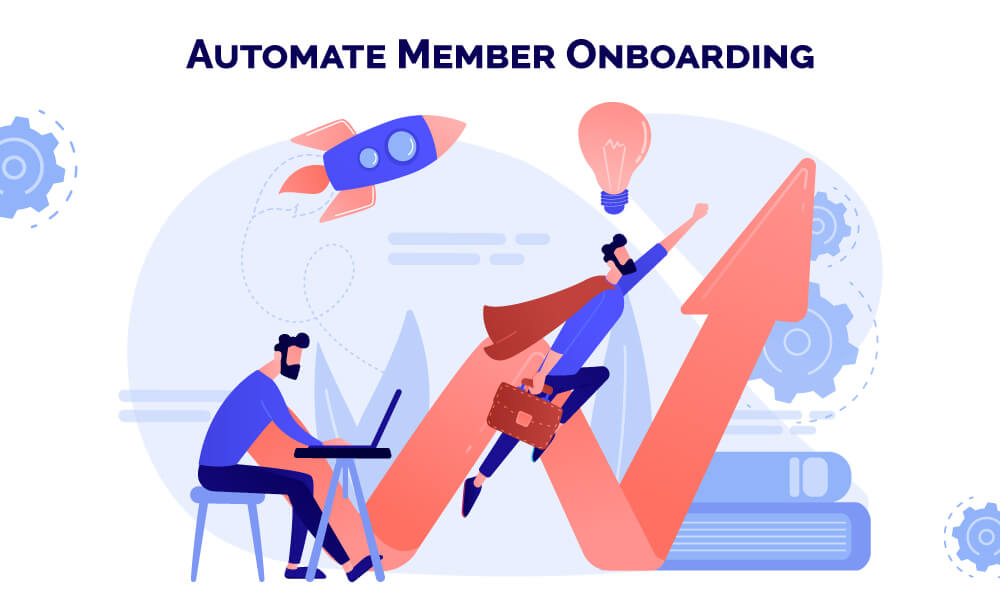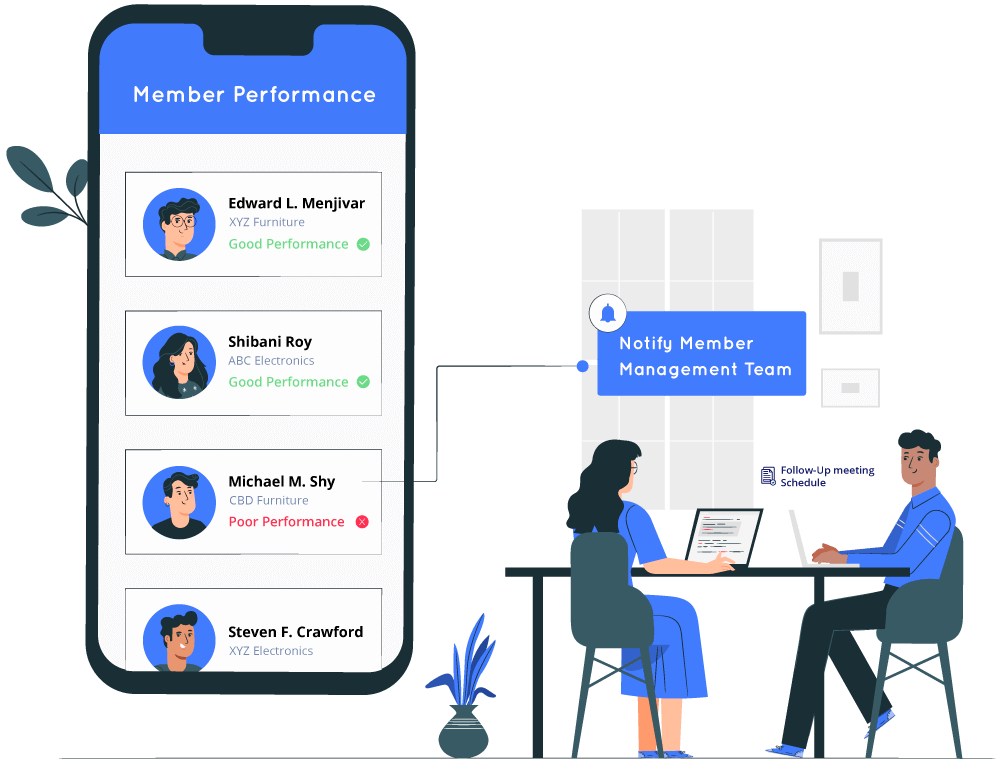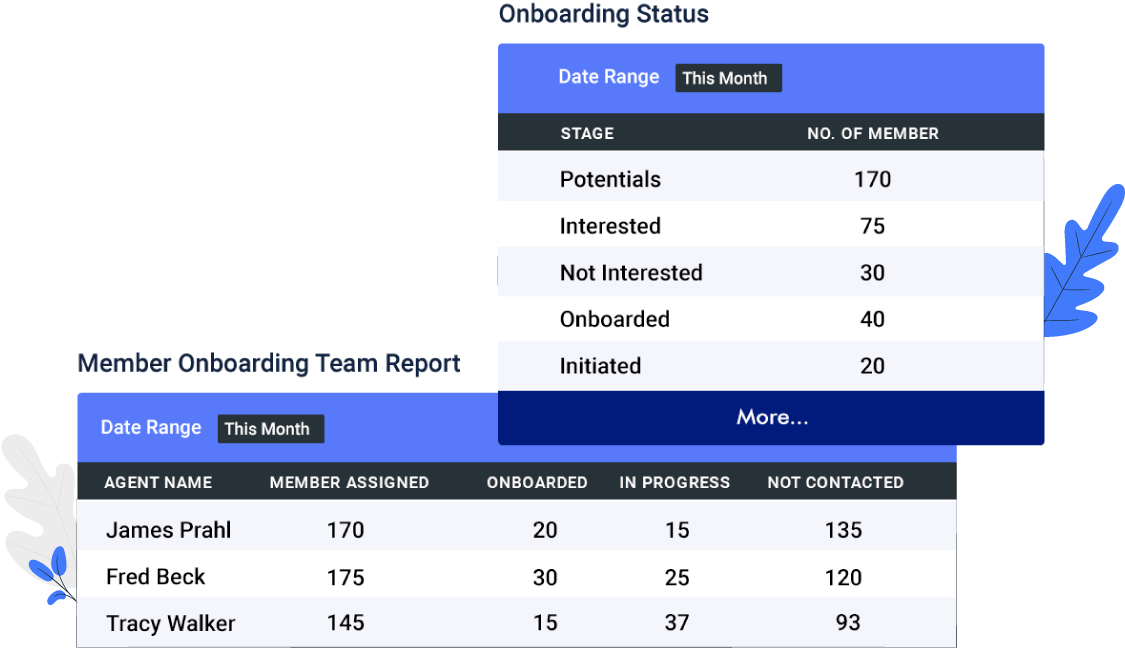How do you handle member onboarding processes in your association/organization? This article illustrates how to create an exceptional onboarding process for higher efficiency.

What is member onboarding?
Member onboarding refers to recruiting a new member in an association/organization/chamber/community. Usually, these include onboarding agents and brokers in their network. However, it may also involve onboarding new clients, vendors, or employees. In fact, in many ways, the process is similar to the vendor onboarding process.
Creating the right relationship with the new member is instrumental in fulfilling their needs and growing your business. Even without a standardized process, you might already be onboarding members. However, an ambiguous new member onboarding process may leave them confused. It may compromise member experience and may also become a reason for members leaving the organization too soon.
The True Cost of Onboarding
Member onboarding in an association requires a lot of time, work, and money. A sound onboarding strategy is the need of the hour to ensure that members do not leave after all the resources allocated to get them onboard.
On the business side, it demands capturing and validating critical member information. It involves assessing compliances and risks. You must also walk them through your platform, policies, procedures, etc.
Navigating through the initial steps of your vendor relationship is complicated. When left unattended, that process might demand a great deal of effort and time.
All these translate into productivity loss and risk. It can amount to hundreds of dollars from disrupted business operations. In a way, you risk losing valuable business and profit margins.
You may have a dedicated staff and a defined process to onboard new members. But the time spent and higher chances of errors in manually handling them add up to hundreds of dollars for businesses of all sizes.
Moreover, this fast-paced business environment also demands better member experiences. Therefore, you need to invest in automation for your onboarding process. It will help you save time, money, resources, and achieve better results.
For instance, vendor onboarding and management software like LeadSquared make it seamless to review and onboard vendors while saving several hours. When you onboard vendors/agents/brokers efficiently, you can leverage opportunities for better relationships. It translates to faster deliveries and better pricing. The platform also empowers users to manage products, pricing and offers in real-time. Thus, providing a one-stop platform for businesses and associations.
So, now you know the essence of an efficient onboarding process.
Let us look at creating an excellent new member onboarding system and how to use automation to scale your organization.
How to Develop a Successful Member Onboarding Process
Step 1 – Create a Formal Member Onboarding Process
Studies show that over 36% of companies, in general, do not have a structured onboarding process, and a significant number report costly consequences.
So, create a standard member evaluation and approval process with clear guidelines.
It will help you pre-determine the kind of members you need. It will also enable your team and potential members to move through the onboarding process without hitches.
Automation can play a vital role here. Automation helps you create pre-defined rules and triggers. So, onboarding any member will follow the correct process every single time. Plus, it is scalable. You build the automated workflow only once, and they would trigger for any new member that enters the system.
Let us take an example.
A typical member onboarding process involves:
- Sending a welcome email to the new member
- Board member reaching out to the new member
- Emailing welcome kit to the member
- Announcing the new recruitment
- Engaging with the new member on social media
- Keep updating the member about the benefits and special offers from your association
- Consistent knowledge sharing at each step to ensure they are in the loop.
With onboarding software, you can automate all of these processes. That said, you can create a no-code workflow that will: automatically send the new member a welcome email; notify the board members to reach out to them and schedule a meeting; send the welcome kit after a defined interval, and email all other members of the association announcing the new joiner.

The software will also make it easy to track the success of each new member. Plus, you can be sure of an automatic record of every completed process. So, automation makes it easy to create benchmarks for success. Furthermore, you can improve your new member onboarding process in the future.
Step 2 – Streamline the Onboarding Process
Success demands more than merely formalizing the onboarding process. You need to carefully plan each step to prevent errors and prepare ahead for things that can go wrong.
For instance, miscommunication can have disastrous effects on contracts. Unclear expectations (goals or milestones) can also erode relationships. Also, members not receiving the right resources to handle their duties create a huge mess.
All these create a wrong impression for your organization and can lead to an untold number of mishaps.
Therefore, you need to create guidelines for each step. It should also cover clear-cut policies and requirements. All these will get better when you standardize and automate your member onboarding process.
That said, automation helps you set pre-defined rules and triggers. It will help you enforce policies and expectations. It will also prevent oversights, confusion, and potential friction.
That way, you can manage each phase of the member onboarding efficiently. In turn, this ramps up opportunities for better results.
Step 3 – Track Contracts
Contracts are the foundations of your relationship with the members. For a robust relationship, outline expectations and protect both sides of the table.
A standard process is, of course, necessary. But there is more. Use automation to speed up processes across contract validation and acceptance.
For instance, you can send a digital contract to the other party for review.
The added benefit of digital platforms is – it helps your members to review and e-sign instantly. That way, they can get back to you in a short time.
You can also track the progress of each contract and receive automated notifications.
That way, no contracts get lost on the way. Such features further help your organization establish a positive reputation.

Step 4 – Create a Member Portal for Registration and Data Collection
New members may have access to several software tools for their routine tasks.
With the right member onboarding platform, you can integrate disparate software to eliminate silos. It will also help you maintain optimum visibility across boards.
On the other hand, members will no longer have to spend time updating records across many accounts. It reduces the amount of time spent on manual, data-entry processes, and the chances of human error. It also ensures that your system has up-to-date records. And in turn, you can have accurate reports at all times.
Step 5 – Establish Clear Communication Channels
A proper member onboarding process makes it easy to measure efficiency and productivity. In contrast, the lack of it leads to unclear expectations, goals, and milestones.
Your pre-determined standards will make it easier to establish goals and milestones.
Yet, it gets better if your onboarding program rests on the culture of communication.
Your member onboarding process should enable diverse departments and stakeholders to share, review, and manage vendor data.
Investing in the right automation software can take care of this. That way, you can mitigate costly mistakes, delays, and other kinds of risks. It also helps you measure and improve productivity and efficiency.
In turn, you can enjoy greater collaboration and transparency. Altogether, it helps maximize returns on investment.
[Also Read: Credit Union Membership Growth Strategies for 2021]
Bonus – Consider a Separate Process for Strategic Supplier Partnerships
Some partners impact your business in more ways than others. From a strategic standpoint, you can create a separate onboarding process for them.
In this case, you may have to weigh and create processes that nurture such partnerships. Creating a separate procedure for these partners can help you build stronger connections. That way, you can drive up their value to your business growth.
Watch this webinar for more insights on:
- Types of onboarding: vendor, agent, partner, member, and many more
- Key metrics to optimize the performance of your vendors
- Customer use cases from marketplace businesses
Concluding Thoughts
Successful businesses depend on thriving relationships. One such vital relationship is your member relationship. Therefore, you must take great care from the first phase to nurture and build solid partnerships.
Invest in an automated onboarding platform to ensure consistent and quality recruitment. Setting up a transparent process from the time of onboarding will entrust a transparent relationship throughout.
Moreover, with the right automation solution, you can achieve higher operational efficiencies and retention rates. A successful member onboarding process will also ensure compliance with regulations. In turn, you will be able to build a positive reputation in the market. On the part of your members, the smooth onboarding experience can make them feel valued. Even so, it empowers them with the right information to support your business needs. In the end, you can look forward to higher efficiency, productivity, and profitability.
Give a new dimension to your member onboarding process. Do check out the LeadSquared automated onboarding portal! Take a demo.









![What is Marketing Automation? [Infographic and Examples] 5 Marketing automation in 2017 - technology meets intelligence](https://www.leadsquared.com/wp-content/uploads/2021/11/Marketing-automation-in-2017-feature-80x80.png)